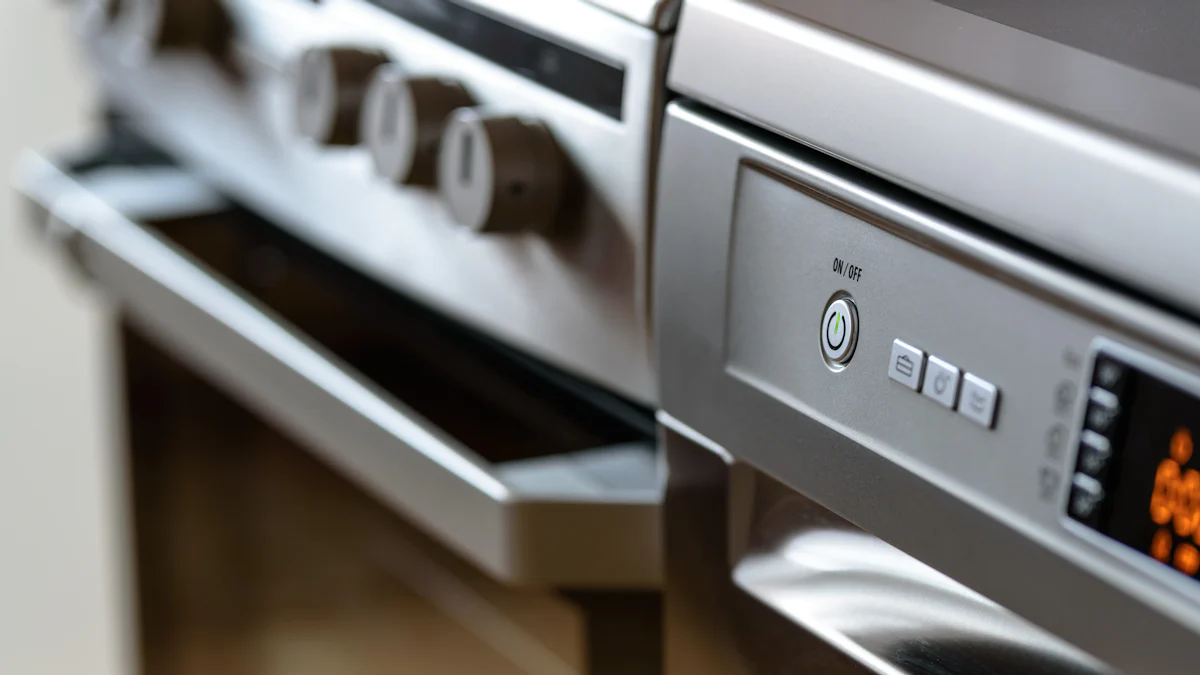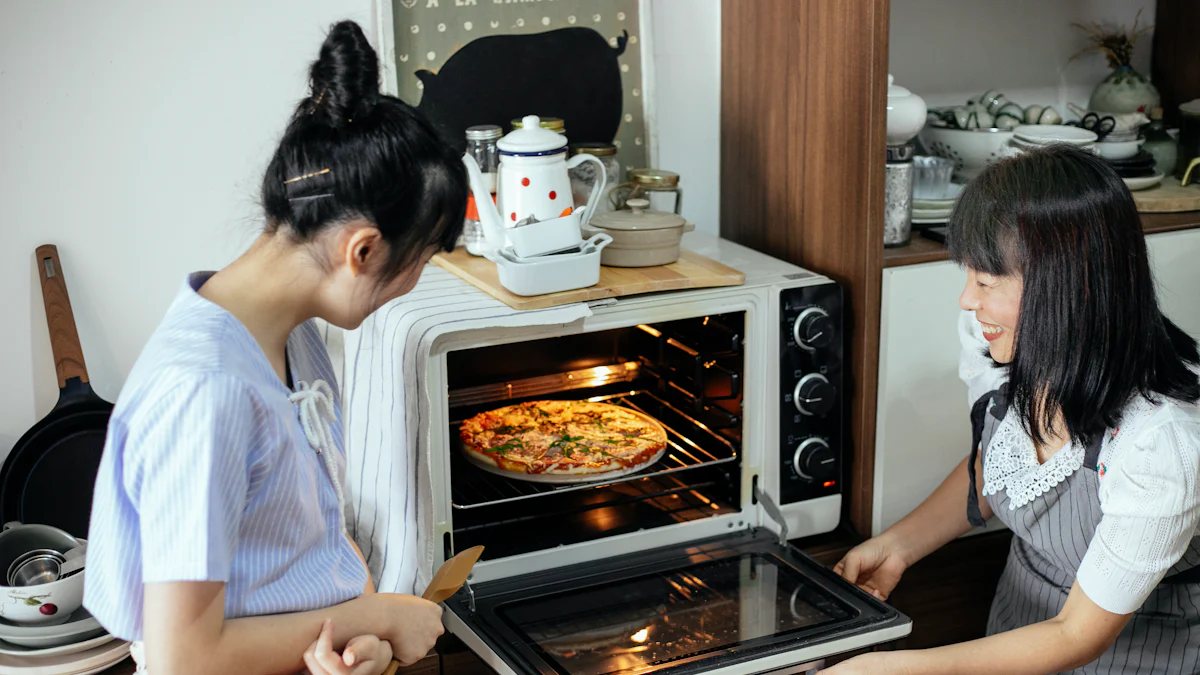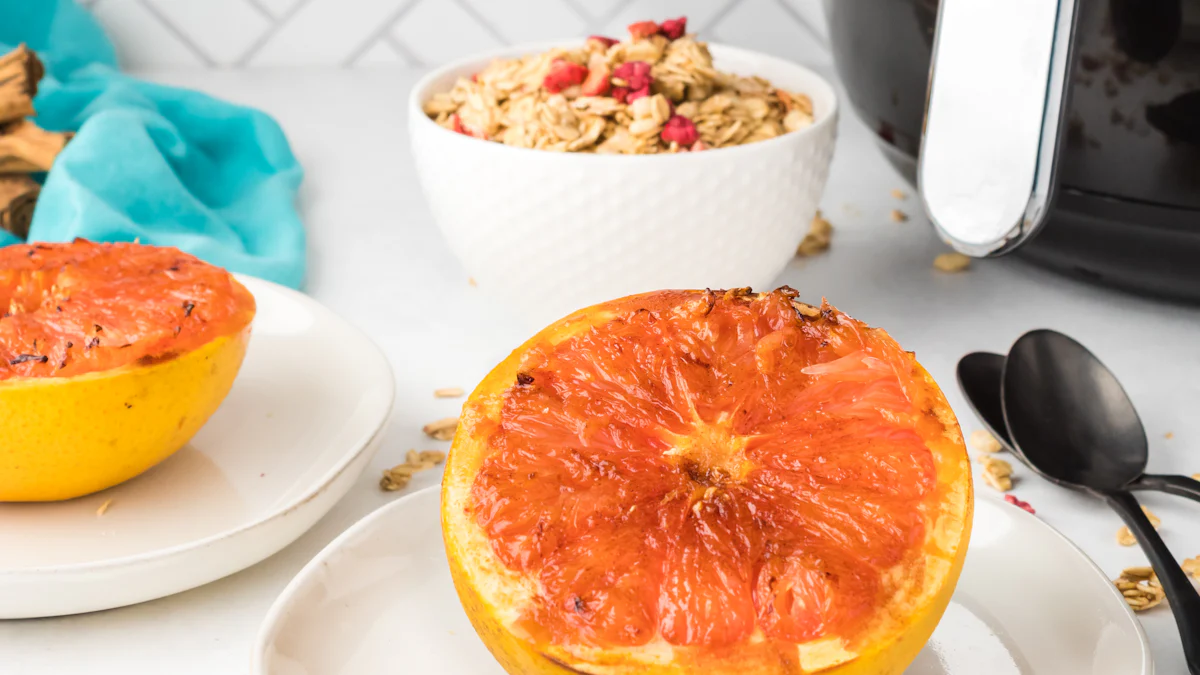Can an air fryer be used in lieu of an oven?

Oil less air fryers have taken kitchens by storm. Many people wonder if an oil less air fryer can replace an oven. This blog will compare and analyze the two appliances to help you make an informed decision.
Understanding the Appliances
What is an Air Fryer?
Definition and Basic Functionality
An air fryer uses rapid air circulation to cook food. This kitchen gadget employs advanced convection technology similar to an oven but in a smaller, more efficient package. Hot air rotates around the food at high speed, creating a crispy layer with little to no oil. The design includes a drip tray to collect excess oil, reducing fat and calories.
Common Uses and Popularity
Air fryers have gained popularity for their ability to make crispy, golden-brown food while using significantly less oil than traditional deep-frying methods. Many people use air fryers to cook a variety of foods, such as:
French fries
Chicken wings
Vegetables
Fish fillets
The compact size and quick cooking times make air fryers a favorite for small households or those who want a healthier alternative to deep frying.
What is an Oven?
Definition and Basic Functionality
An oven is a larger kitchen appliance that cooks food by heating the air inside a chamber. Ovens can use various methods like baking, roasting, and broiling. Traditional ovens often require preheating and take longer to cook food compared to air fryers. Convection ovens, a type of oven, use fans to circulate hot air, speeding up the cooking process.
Common Uses and Popularity
Ovens are versatile and can handle a wide range of cooking tasks. People commonly use ovens for:
Baking cakes and cookies
Roasting meats and vegetables
Broiling fish
Reheating leftovers
Ovens can accommodate larger quantities of food, making them ideal for family meals or entertaining guests. The multiple cooking modes offer flexibility, allowing users to prepare a variety of dishes.
Comparing Features and Benefits

Cooking Methods
How Air Fryers Cook Food
Air fryers use rapid air circulation to cook food. The hot air moves quickly around the food, creating a crispy exterior. This method mimics deep frying but with much less oil. The smaller cooking chamber of an oil less air fryer allows for faster cooking times. The design often includes a drip tray to collect any excess oil.
How Ovens Cook Food
Ovens cook food by heating the air inside a large chamber. Traditional ovens use heating elements at the top and bottom. Convection ovens add a fan to circulate the hot air. This speeds up the cooking process. Ovens can bake, roast, and broil food. Preheating is usually required, which takes additional time.
Energy Efficiency
Energy Consumption of Air Fryers
Air fryers are generally more energy-efficient than traditional ovens. The smaller size and efficient heat application mean less energy consumption. Oil less air fryers heat up quickly and cook food faster. This results in lower energy use overall.
Energy Consumption of Ovens
Ovens consume more energy due to their larger size. Heating a big chamber takes more power. Even convection ovens, which cook faster, still use more energy than air fryers. The longer preheat times and extended cooking durations add to the energy cost.
Versatility and Capacity
Types of Dishes Cooked in Air Fryers
Air fryers excel at cooking small, crispy foods. Popular dishes include:
French fries
Chicken wings
Mozzarella sticks
Fish fillets
The compact size makes them ideal for quick snacks or meals for one or two people.
Types of Dishes Cooked in Ovens
Ovens offer more versatility. Common uses include:
Baking cakes and cookies
Roasting whole chickens
Broiling steaks
Reheating casseroles
The larger capacity allows for cooking bigger meals, making ovens suitable for family dinners and gatherings.
Capacity Differences
Air fryers have a smaller cooking chamber. This limits the amount of food cooked at one time. Ideal for small households or single servings. Ovens, on the other hand, can handle larger quantities. The spacious interior accommodates multiple dishes simultaneously. This makes ovens better for meal prep and entertaining guests.
Use Cases and Practical Considerations

When to Use an Air Fryer
Best Scenarios for Air Fryers
Air fryers shine in specific situations. Small households benefit from the compact size. Quick snacks or meals for one or two people work best. Foods like French fries, chicken wings, and fish fillets cook quickly and evenly. Health-conscious individuals enjoy the low-oil cooking method. An oil less air fryer uses minimal oil, providing a healthier alternative to deep frying.
Energy efficiency matters too. Cooking with an air fryer can save up to 84% of energy compared to an electric oven. This makes it a cost-effective choice for frequent use. The quick preheat time and faster cooking speeds also save time, making weeknight dinners easier.
Limitations of Air Fryers
Air fryers have limitations. The smaller cooking chamber restricts the amount of food cooked at once. Large meals or dishes for multiple people may not fit. Baking cakes or roasting whole chickens proves challenging. The design favors crispy foods over baked goods.
The versatility falls short compared to ovens. While air fryers excel at certain tasks, they lack the ability to bake, broil, or roast large items. Users may need to adjust recipes to fit the smaller space. The cooking process may require multiple batches, extending overall cooking time.
When to Use an Oven
Best Scenarios for Ovens
Ovens offer unmatched versatility. Baking cakes, cookies, and bread works best in an oven. Roasting whole chickens or large cuts of meat requires the spacious interior. Family dinners and gatherings benefit from the larger capacity. Multiple dishes cook simultaneously, saving time and effort.
Ovens handle a variety of cooking methods. Baking, roasting, and broiling all work well. The ability to switch between modes adds flexibility. Reheating casseroles or preparing complex meals becomes easier. Ovens accommodate larger quantities, making meal prep efficient.
Limitations of Ovens
Ovens have drawbacks too. Energy consumption remains high due to the larger size. Heating a big chamber takes more power. Even convection ovens use more energy than air fryers. The longer preheat times add to the energy cost.
Cooking times extend compared to air fryers. Preheating and longer durations slow down the process. Smaller households may find ovens less practical for everyday use. The larger footprint takes up more kitchen space. Cleaning an oven also requires more effort.
Verdict and Recommendations
Summary of Key Points
You now have a clear understanding of the differences between an air fryer and an oven. An air fryer uses rapid air circulation to cook food quickly and efficiently. The compact size makes it perfect for small households or quick meals. You can enjoy crispy foods with less oil, making it a healthier option.
Ovens, on the other hand, offer versatility and capacity. You can bake cakes, roast large cuts of meat, and broil fish. The larger cooking chamber allows you to prepare meals for family gatherings. Ovens also provide multiple cooking modes, adding flexibility to your kitchen tasks.
Energy efficiency varies between the two. An air fryer consumes less energy due to its smaller size and faster cooking times. Ovens require more energy to heat the larger chamber and take longer to cook food. However, ovens excel in handling larger quantities and more complex dishes.
Final Recommendation Based on Analysis
Consider your cooking needs and lifestyle when choosing between an air fryer and an oven. If you live in a small household or prefer quick, healthy meals, an air fryer might be the best choice. The compact size and energy efficiency make it a practical addition to your kitchen.
For those who enjoy baking, roasting, and preparing large meals, an oven offers unmatched versatility. The ability to cook multiple dishes simultaneously saves time and effort. An oven's larger capacity makes it ideal for family dinners and entertaining guests.
In summary, both appliances have their strengths. Your decision should depend on your specific needs and preferences. Happy cooking!
Let's recap the main points. Air fryers use rapid air circulation to cook food quickly and efficiently. The compact size makes air fryers perfect for small households or quick meals. Ovens offer versatility and capacity for baking, roasting, and broiling.
So, can an air fryer replace an oven? Not entirely. Each appliance has strengths. Air fryers excel at quick, crispy foods with less oil. Ovens handle larger meals and more complex dishes.
Consider your needs and preferences. Do you want quick snacks or large family dinners? Choose the appliance that fits your lifestyle. Happy cooking!
See Also
Is Pyrex safe to use in an air fryer
Comparing 40 Qt Air Fryers and Convection Ovens
Reasons for using less oil in an air fryer
